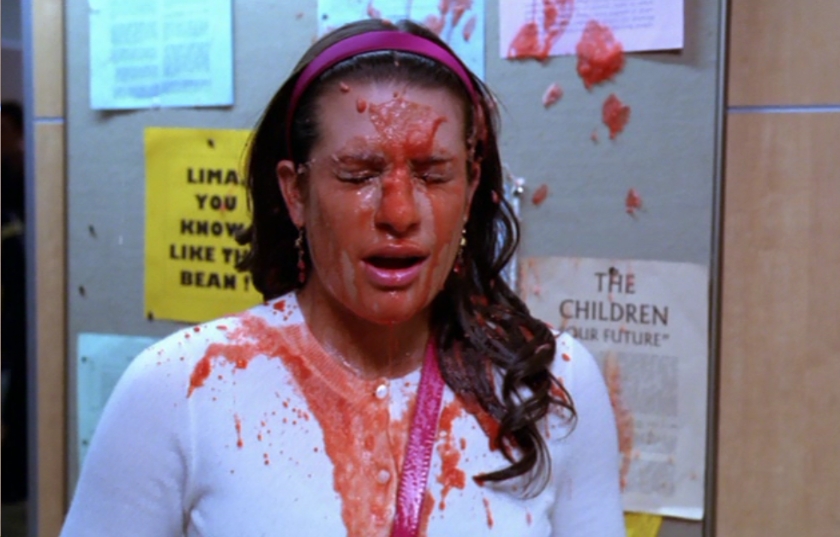In the pilot episode of Freaks and Geeks, the ever-awkward Sam Weir asks his forever crush Cindy to dance. The song: “Come Sail Away” by Styx. The tempo: slow-dance mode. Sam is ready for this moment. While not the most elegant of slow dancers, he knows he can do it without being noticeably horrific. Cindy accepts his invitation with gusto and leads him by the hand to the center of the dance floor. The walk seemingly takes an eternity and just as Sam reaches for Cindy’s hips, the unthinkable happens. The song: “Come Sail Away” by Styx. The tempo: fast-dance bombastic mode! Sam is unprepared and stunned. His flash reaction is to deny the existence of this shifting time signature. But after one “Come on, Sam!” from Cindy, he lets the beat take over and just goes with the flow. In this moment, our super uncool anti-hero becomes, undeniably, the coolest person on the planet. And that’s cool. And we’re cool for thinking that.
If Freaks and Geeks would have continued beyond its ridiculously short one-season run, Sam Weir might have went on battling the bullies of his high school with mild success. He might have had that life-changing mentor who recognized his genuine artistic talent or his extraordinary computer coding skills and encouraged him to apply to NYU or Stanford. His family, from the fictional town of Chippewa, Michigan, might not have had the money to pay his tuition and so Sam might take out loans for college and graduate with big time debt. But it would have been worth it. It was in college that he found like-minded individuals. It was in his theater troupe or his D&D club that he found he didn’t need Greek life or football to boost his popularity, that he could be himself, his totally uncool self. And that’s pretty cool.
At some point in our lives, we have all experienced the feeling of being uncool, or of being the underdog, the person in society or a situation with little influence and even littler chance of succeeding. Of course, underdogs are often fan favorites. Fans who pay $250 for a ticket to see Roger Federer take on an unseeded 19-year-old from Japan do not want it to end in three sets. They want major tension, they want a game. As a spectator, rooting for the underdog is easy and fun. As the underdog, life is anything but.

Unlike Freaks and Geeks, when Glee first premiered in 2009, it was not only one of the most hyped up shows of the season, it was one of the most controversial. From creator Ryan Murphy (Nip/Tuck, Popular, American Horror Story) came a high school dramedy centered around mostly underdogs: a group of students with gifted vocal cords, trying to make it in their glee club. How uncool is that? The original promos featured our core group of kids getting Slurpee-like drinks, known on the show as “Big Quench,” thrown in their faces. The producers even went so far as to use “Big Quench” as one of their major icons as though to say, We Are The Kids You Pick On. And you were either with them or against them. And if you were against them, well, good luck to you. The show helped to give even more rise to the geek, the gay, the freak, the underdog. It tackled your typical high school topics: gun control, suicide, sexual identity, teen pregnancy, and above all, bullying. But something began resonating with actual kids in actual American high schools. And after a slew of actual teen suicides, foundations and organizations (The Trevor Project, Born this Way Foundation) shot into the limelight, and rightfully so.
One of the most well-known and well-documented was the It Gets Better Project, started by author Dan Savage whose goal was to help prevent LGBT youth suicide through messages of encouragement, assuring the viewer that life will get better beyond their lowest of low points. And what a hit it was! From Tom Hanks to Google, from the San Francisco Giants to Kermit the Frog, celebrities jumped at this chance to help. It was (and still sort of is) an inspiring campaign and because of the Internet and YouTube, unlike any that preceded it. If you helped out with this cause or any like it, you were pretty much the coolest. If you didn’t, wow, totally uncool man for realz.
However you label it, the outcast, the underdog, the other, have always been a part of popular culture, be it in movies, television, books, or real life. The underdog creates tension and makes for a great story. It gives us as the spectators someone to root for and gives the actual underdog something to strive for, a shot at living the cool life, not matter how uncool they are. There’s a moment in the beloved film Can’t Hardly Wait when Jennifer Love Hewitt’s character Amanda is on the search for Preston, played by the adorable Ethan Embry. Preston (nobody) has admired Amanda (somebody) for some time now. She finally reads the love letter Preston has written her and is on the hunt for him at a party, not knowing much about who he is or what he looks like. She stumbles upon two stoners who give her this description: “He’s kinda tall. Has hair. And wears tee shirts sometimes.” It’s perhaps the best line of the movie and a great example of how easy it is for young people to get lost in the shuffle. No wonder these years are known for rebellion and the search for identity. Everyone in high school wears tee shirts sometimes!

